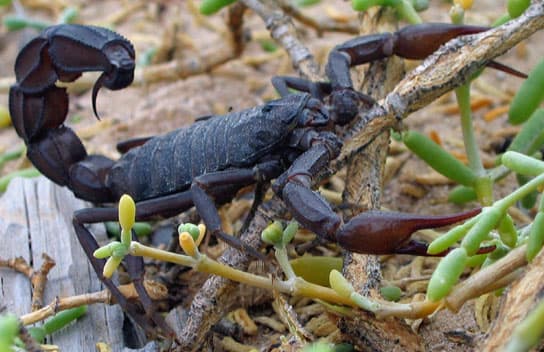Scorpion
Centruroides sculpturatus
SpidersNOTE: Scorpion is an arachnid (8 legs), not an insect. Yellowish-brown scorpion with long slender tail and pincers. About 2-3 inches. Most venomous scorpion in North America (Arizona bark scorpion). Found in southwestern US. Nocturnal. Can climb walls and invade structures. Sting causes severe pain and can be dangerous, especially to children and elderly. Glows under UV/black light which aids in detection and control.

Control Methods
Recommended methods for controlling this pest
| Method | Type | Effectiveness | Requirements |
|---|---|---|---|
| Weep Hole Vent Installation | Mechanical | None |
Common Harborage Locations
Where to find this pest during inspections
| Location | Why Found There | Priority |
|---|---|---|
| Firewood Piles | Moisture retention, bark provides food and shelter, direct contact with ground, proximity to structure. | High |
| Stored Lumber | Wood-destroying pests consume material, protection from weather, often in contact with soil. | Medium |
| Dense Vegetation Against Building | Moisture retention, bridge to structure, protection from predators, food sources. | Medium |
| Outdoor Rocks & Debris | Scorpions hide under objects during day, emerge at night to hunt. Cool, moist environment under rocks. Protection from predators and sun. | Medium |
Important Disclaimer: The information provided in this knowledge base is for educational and reference purposes only. Pest management professionals should always consult current product labels, Safety Data Sheets (SDS), manufacturer instructions, and applicable local, state, and federal regulations as the definitive source of truth. Product formulations, application methods, safety requirements, and regulations may change over time. This information may be out of date and should not replace professional judgment, proper training, or required licensing and certifications.